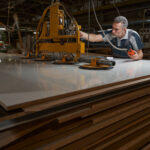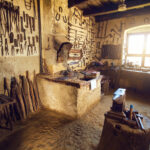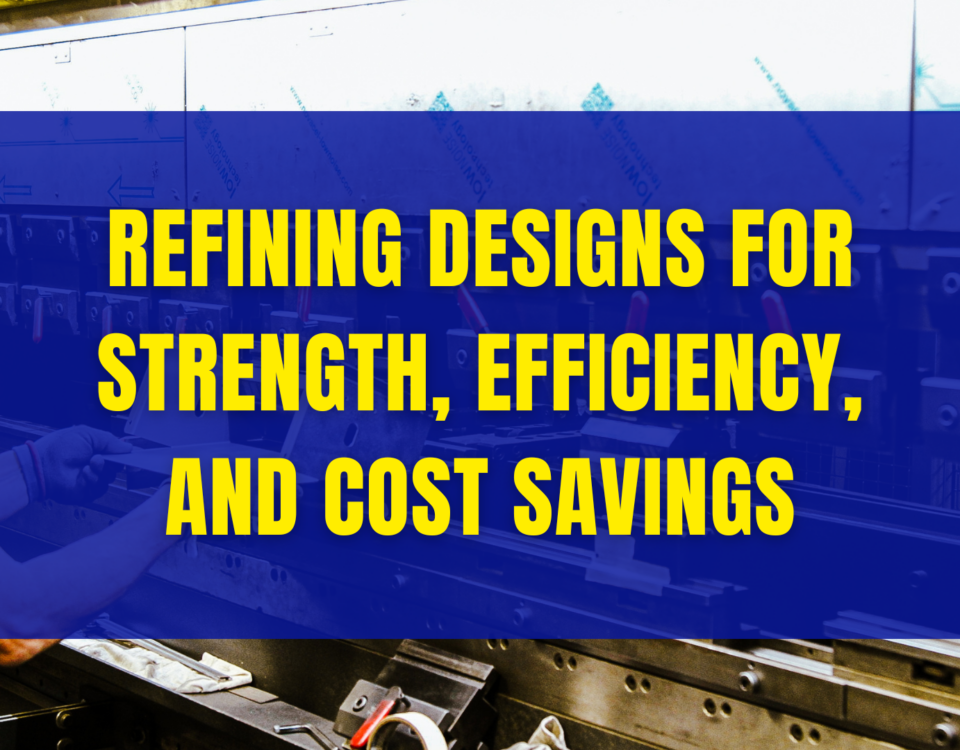
What Can AMS do with Sheet Metal?
February 1, 2022
Metal Fabrication – A Quick History
April 1, 2022There are many different techniques used in sheet metal fabrication
There are many different techniques used in sheet metal fabrication, including stamping, punching, rolling, and shearing. Each technique has a distinct purpose and is used to create different shapes and components, which often require additional finishing and treatment processes following fabrication.
Cold Forming Techniques for Sheet Metal
Shearing was one of the longest-standing means to cut sheet metal but has since been replaced by faster, more precise methods.
Punch press uses tools to punch holes and shapes to make any number of patterns and is particularly effective for cutting simple patterns that are more economical than cutting on a laser cutter or a water jet. Punch presses can operate at hundreds of strokes per minute for processing parts quickly.
Laser cutting works with a combination of various gasses to burn away material and produce a clean edge and can hold very tight tolerances.
Hemming is where the edges of the sheet metal are folded over itself or folded over another piece of sheet metal to achieve a tight fit or a stronger, rounded edge. This technique joins parts together to improve the appearance or increase the strength and reinforce the edge of a part.
Most sheet metal bending operations involve a punch and die type setup when forming along one axis. Punch and dies come in all sorts of geometries to achieve varied different shapes. From long gentle curves to tight angles at, below, or above 90-degree angles bending metal can achieve many different shapes. Press brakes are generally needed when a sharp angle is desired. Rolling and forming methods are used when a long continuous radius is desired in one direction, or along one axis.
Design Considerations For Sheet Metal Fabrication
Here are some considerations AMS takes into account during fabrication:
Sheet metal fabrication is most cost-effective when standard tool sizes are used as opposed to costly custom tools that need to be made specifically for the job. If a single part becomes too complex, we consider welding or riveting parts together that can be made using standard or universal tools.
Because bends will stretch material, features such as holes, cut-outs, inserted hardware should be located well enough away from bends to prevent distortion of the hole.
Press brakes create bends by pressing sheet metal into a die with a linear punch, so the design does not allow the creation of closed geometry.
Sheet metal tolerances are much more generous than machining or 3D tolerances. Factors affecting tolerances include material thickness, machines used, and the number of steps in the fabrication process.
A uniform bend radius such as 0.030 in. (industry standard) should be used on every bend of a part to reduce multiple setups and accelerate production.
Welding thin materials can lead to cracking or warping. We may consider other joining methods when working with thin materials.
Finishing Sheet Metal
There are several different methods and reasons to finish sheet metal parts. Depending on the material chosen, some finishing techniques protect the material from corrosion or rust while other finishing materials are done for aesthetic reasons. In some cases, finishing can achieve both purposes. Standard finishing techniques include:
Brushing – Used to deburr and remove surface defects from sheet metal parts. The surface pattern created is a uniform parallel grain resulting from the brush moving against the metal surface in one direction.
Plating – The process of coating a layer of metal to an object of different types of metal. This process is usually for aesthetic purposes or more practical reasons such as corrosion resistance and protection from wear and tear.
Polishing – A layer of oxidation and also a thin layer of the material itself is ground off. This smooths out the metal, removing imperfections, and giving it a shinier aesthetic.
Powder coating – Creates a hard finish that is tougher than conventional paint. Powder coating comes in any color and therefore makes a great custom finish method when both durability and aesthetics are desirable finishes.
Sandblasting – The operation of forcibly propelling a stream of abrasive material against a surface under high pressure to smooth a rough surface, roughen a smooth surface, shape a surface or remove surface contaminants.
Sheet Metal Fabrication
AMS has been committed to providing customers with precision sheet metal fabrication services for more than three decades. Our team has the experience and expertise needed to get your job done properly and promptly. These qualities, combined with some of the most advanced metal fabrication equipment around, allow us to provide you with exceptional quality at low prices.


